🇹🇲 Turkmenistan – dead roads and bike yoga
4 days and 1,433km (Total: 83 days and 17,860km)
The last fifty kilometres to the Kazakhstan-Turkmenistan border were bad, really bad. If you wanted to recreate the road, here are five simple steps to get started:
- Get a spade and create piles of ground close together but of random sizes and shapes.
- In between said piles, dig holes anywhere from one to three feet deep.
- Smother the whole thing in concrete (the cheapest you can find) but before it dries make sure to drive some tractors over the whole thing and lob some rocks in there too for good measure.
- When all of that is dry, sprinkle a few hundreds of tons of sand over it all.
- Finally, station a sizeable population of camels on either side with an incentive to cross the road frequently.
It took us two hours to cover those fifty kilometres, in forty degree heat, with no one else in sight. For a fifty kilometre radius, the only sounds you could hear were Becs counting down in hundred meter intervals, me saying “oh fuck” every ten seconds, and K's suspension bottoming out and making a thud just before or after my cursing.
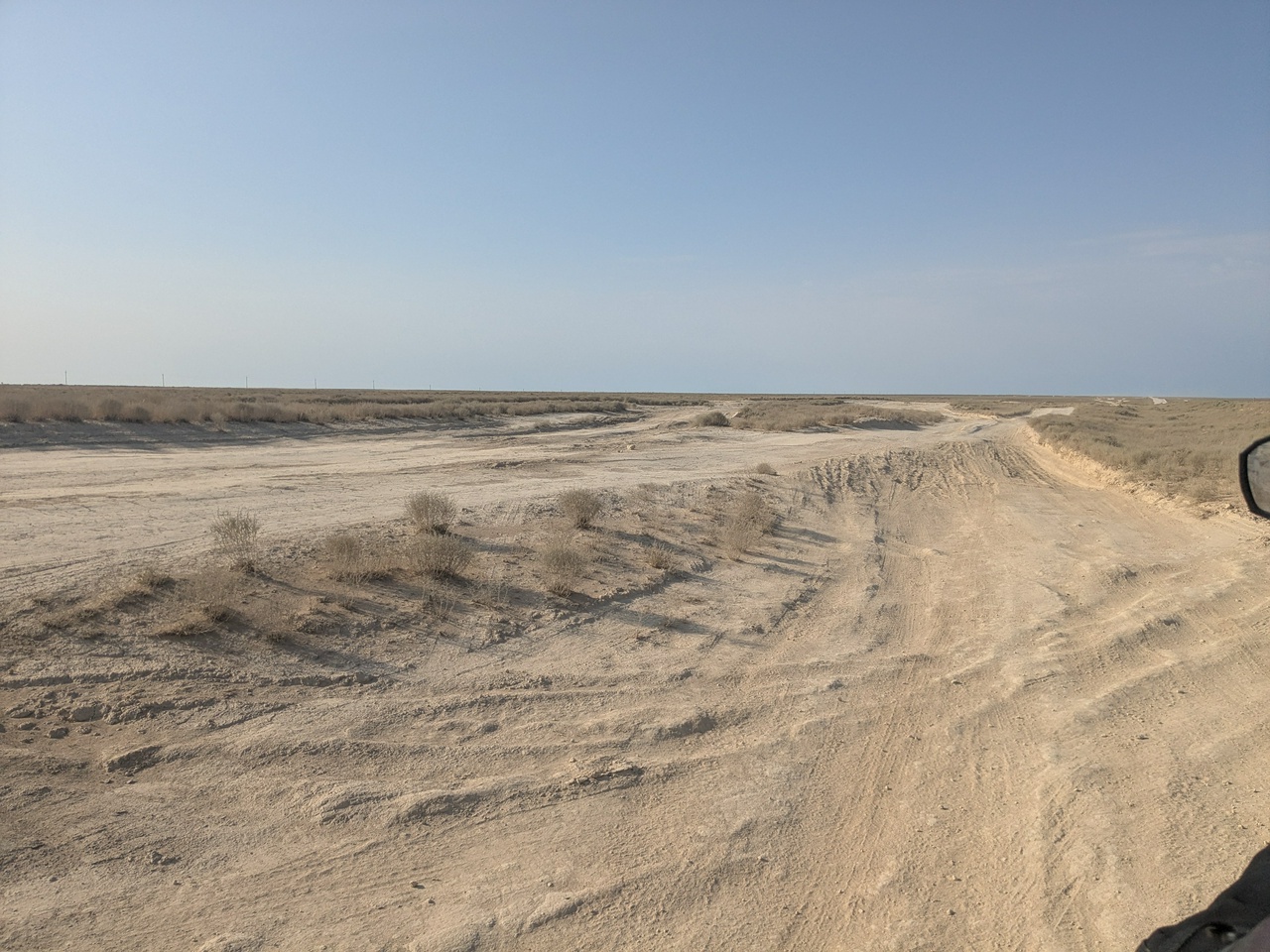
The arrival to the Kazakhstan exit border couldn’t have been anymore anticlimactic. We entered a small shed to get our passports stamped followed by a customs officer opening our panniers that were so caked in dust that he didn’t touch anything. Everyone looked confused to see us, saying that only about ten foreigners a year travel through this border.
Exiting a country overland is easy. But entering one is another story, and Turkmenistan would be the protagonist if ever such a story existed. Three hours with more paper shuffling but this time we also had to pay per shuffle. Covid test, tourist tax (British being the most expensive), bike import, bike insurance, fuel tax, and others which I gave up asking questions about. They even spent time literally drawing out the route we were taking through the country on a physical map. Overall we spent about five hundred dollars and several litres of sweat before we officially entered Turkmenistan.
Since separating from the Soviet Union in 1991, the country has remained insular and tourism is strictly controlled. You need a full-time guide with you at all times and ours was called Bahtiyar who was accompanied by a driver called Annamuhamet. They told us we had two hundred kilometres to reach our first hotel. The road was significantly better than on the Kazakh side of the border, despite the fact that a single pothole would still make headline news in Britain — and there were thousands of them. I realised that locals adopt one of two strategies: drive at fifty kilometres per hour and dodge around them, or drive at one hundred and fifty kilometres per hour in an attempt to glide over them. There's no middle option. We chose the former and arrived at our hotel four hours after crossing the border. From start to finish it was a gruelling twelve hour day — our most difficult yet.
At the hotel, they gave us a wifi password but few websites loaded properly and all communication apps were offline — a fact we realised was true for all of Turkmenistan. Bahtiyar accompanied us to dinner and we were surprised at how expensive food was relative to neighbouring countries, with a staple Pilaf dish costing thirty manat, which Google (behind a VPN) converted to nine dollars. But, we learnt, that was the official exchange rate set by the Central Bank of Turkmenistan, and the “black market rate” used on the street was nineteen manat for one dollar; so our meal was really just one dollar and fifty cents. Great value for money for high quality food that was all home-grown due to strict import laws.
Even better value for money was fuel. A full tank of petrol cost us just… one dollar. A welcome relief for our budget after the expensive border crossing, and especially since we were covering serious distances each day through sparsely populated desert. The mental stimulation of the riding was low: the roads were straight and flat, the scenery hidden behind a thick haze, and even insects had stopped flying into my helmet — either too hot for them or they need an expensive visa too. Speed wasn’t even something I had to think about, as local police aren’t allowed to stop foreign vehicles.
With the extra headspace I discovered a new art: using airflow through the gaps in my jacket to air-condition different parts of my body. Sweat accruing near the belly button? No worries, sit up tall, tilt the head back slightly and air will funnel down your neck and over the torso. Right nipple starting to overheat? Just stretch your left hand out over the windshield, bend your wrist at a right angle, and splay your fingers like a starfish. Instant relief. Honestly, I could probably make a poster of all the different positions I’ve been learning. Bike yoga.
On our third day, with my new air conditioning system operational, we rode into the capital, Ashgabat. It's like The Capitol of Panem from the Hunger Games. As you travel in, you go from shitty roads and basic concrete buildings to immaculate four-lane highways (one lane reserved for government officials) and white marble palaces — a policy decreed by the former president who envisioned the city as “The White City.” Only Ashgabat-registered cars can enter the city; if you’re born elsewhere in the country you need to park outside the city and get the train in. The cars can only be white, silver or gold, and they have to be sparkling clean otherwise the police will fine you. Fortunately we were exempt from that rule too.
We left K at the hotel and got a tour of the city in Annamuhamet’s car. We saw the huge Turkmenbashi mosque (which was empty), the state museum (assigned with a new compulsory guide), and the city shopping mall (our favourite part). Along the way we drove past The Ministry of Foreign Affairs, The Ministry of Agriculture, The Ministry of Education, The Ministry of Energy, the Ministry of Construction, The Ministry of Security, and all the other ministries that were equidistance apart and grand in design. We even stopped to see a bus stop that was air-conditioned with the national news playing on a TV inside.
After a night in Ashgabat, we rode to the Darvaza gas crater (“Door to Hell”), bang in the middle of the country. Our guide said the road to get there was “dead road” which, by this point, we knew meant dodging potholes like you’re playing a video game, just in sweltering heat and real repercussions if you make a mistake. So we decided that Becs and the luggage would go in the car to reduce the weight — and responsibility — I was carrying on the bike for the next two days and six hundred kilometres.
I got stuck a few times along the way.

But we eventually arrived at our yurt and parked (/got stuck) in the sand for the night.
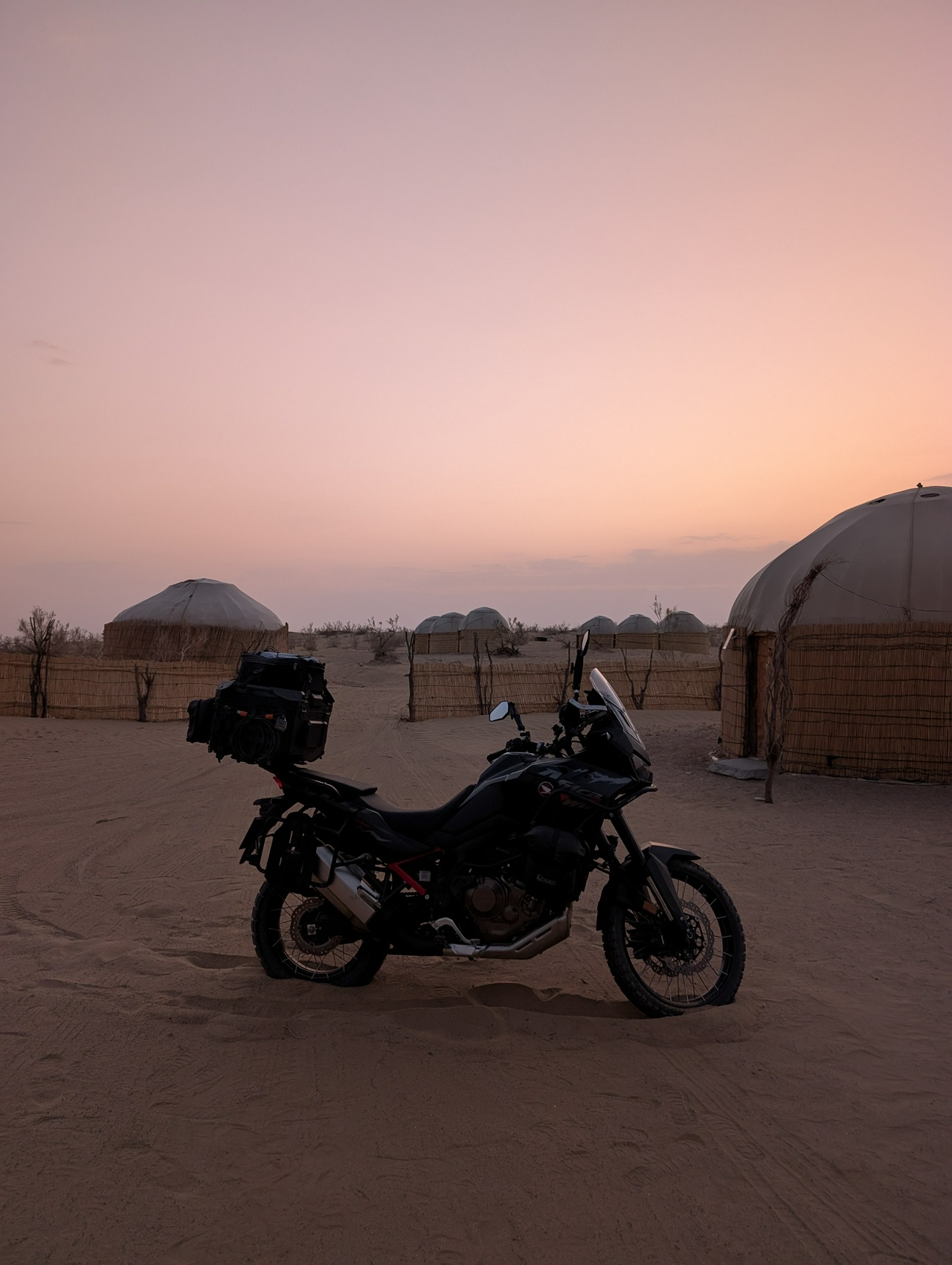
Bahtiyar cooked us a bbq whilst we walked over to check out Turkmenistan’s most popular tourist attraction.
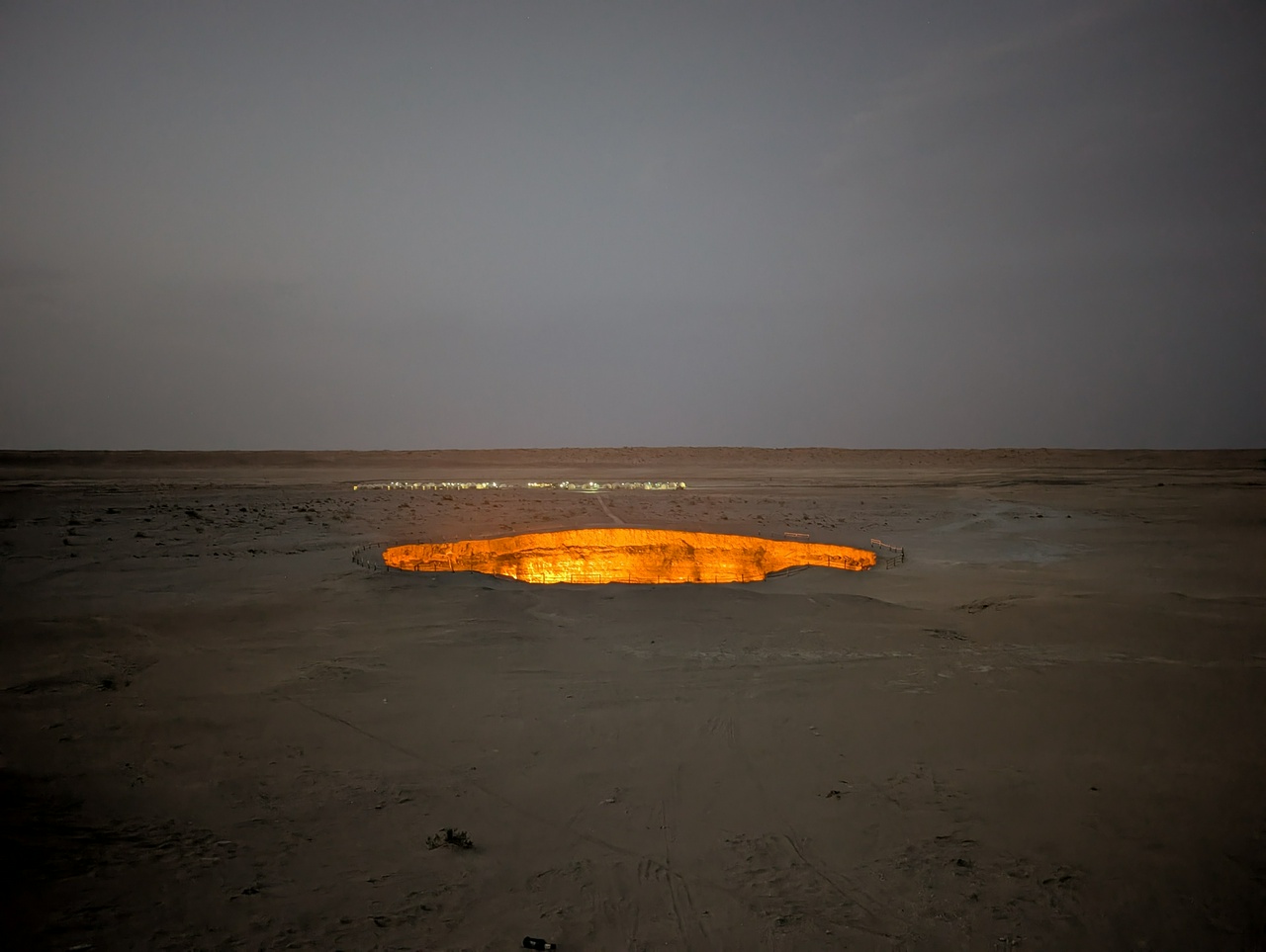
The heat kept us awake in the yurt till one o'clock in the morning, and we woke three hours later to start the final ride to the border before the sun rose. It was a seven hour ride, with one stop to refuel myself on the local version of Red Bull and another to refuel the bike on siphoned petrol from a stranger passing by in an old Soviet truck.
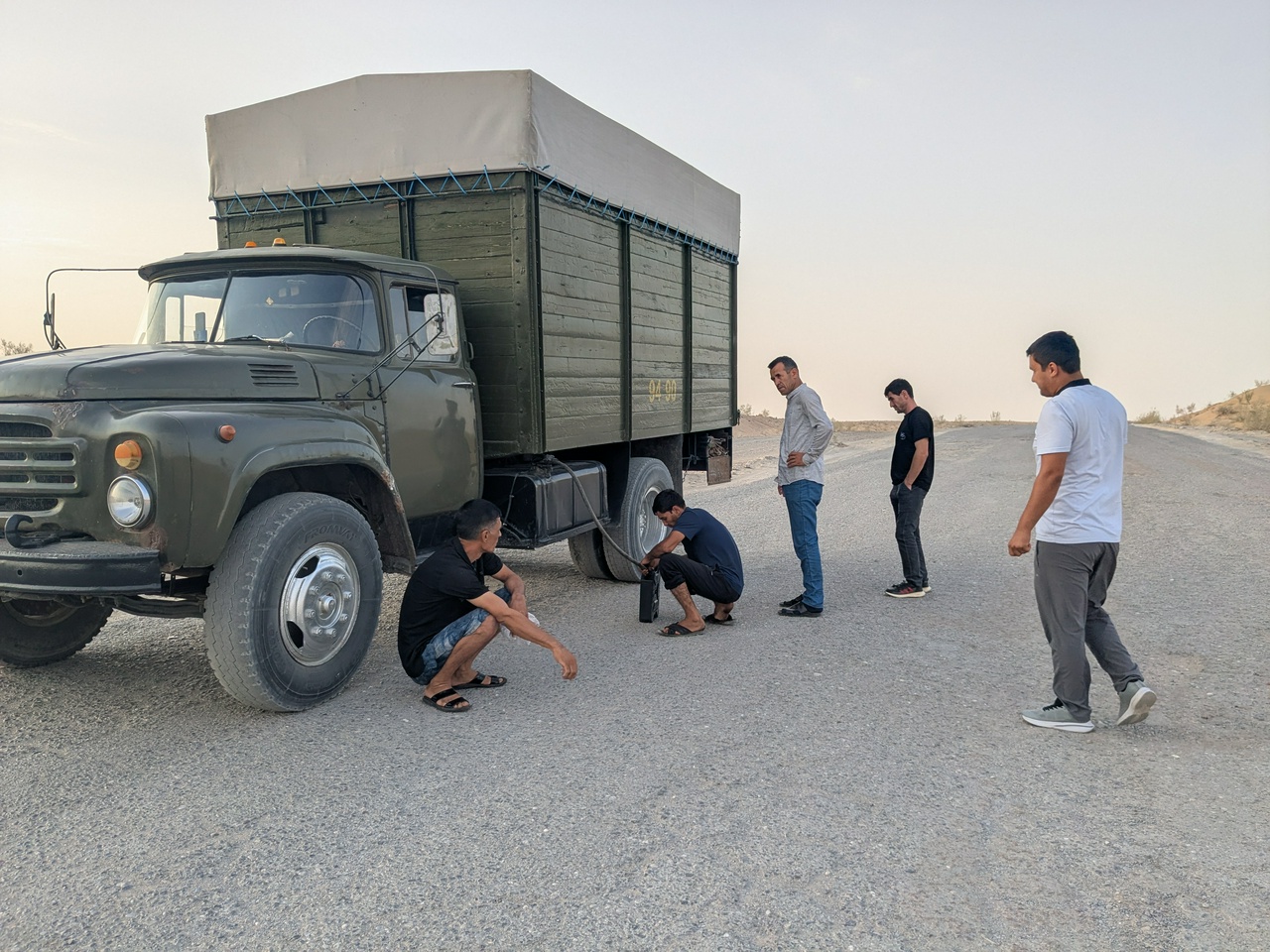
We arrived at the border just before it shut for lunch time, paid a few more border fees, and waved goodbye to Bahtiyar. It was an intense five days riding through Turkmenistan. The riding wasn't enjoyable, but we made plenty of life memories and it was fascinating to see inside a country that wants to keep to itself.
Despite the physical strain, the motorcycle journey is making me feel a lot younger.
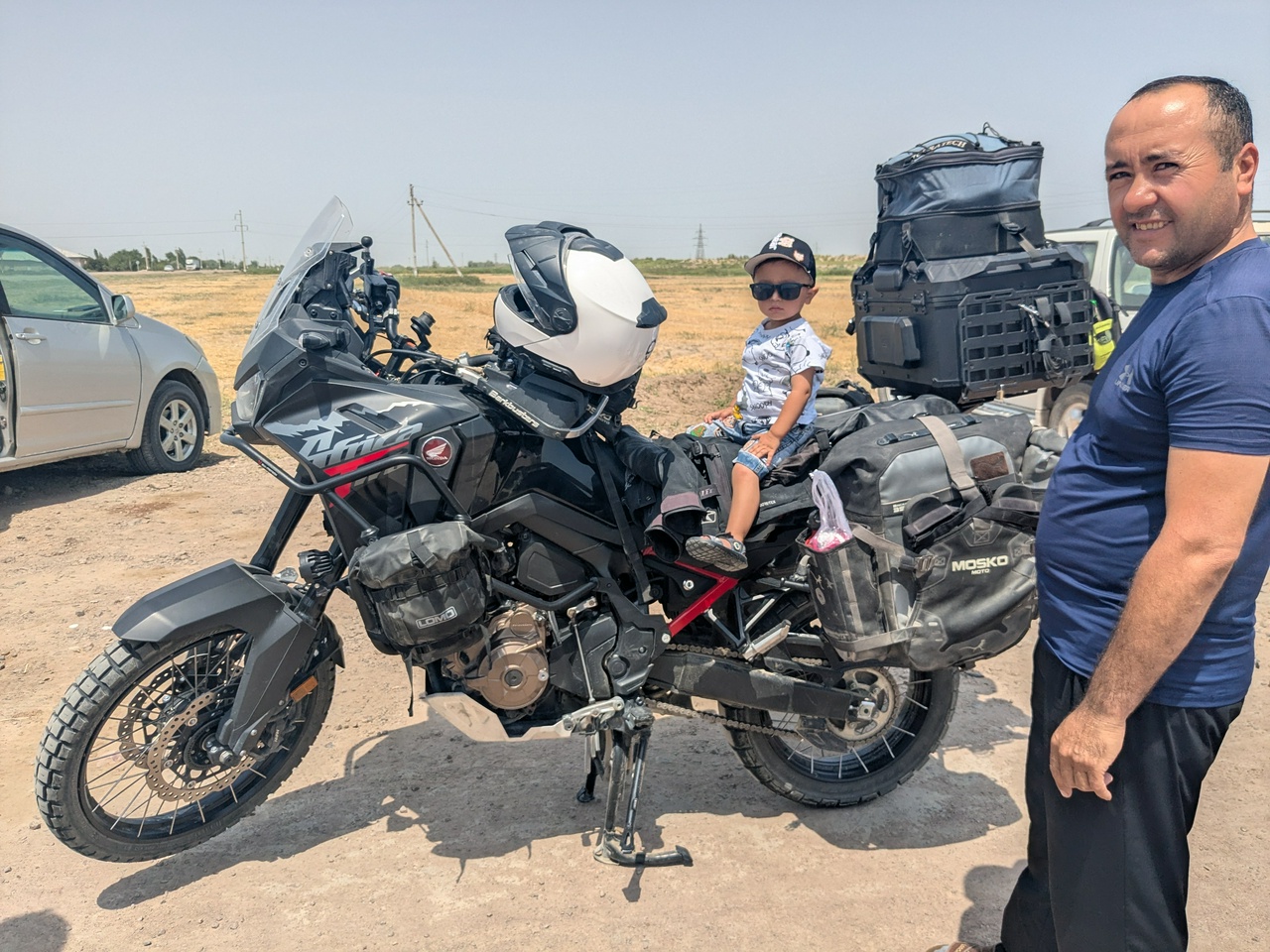
Next stop: more “roads” to Tokyo.